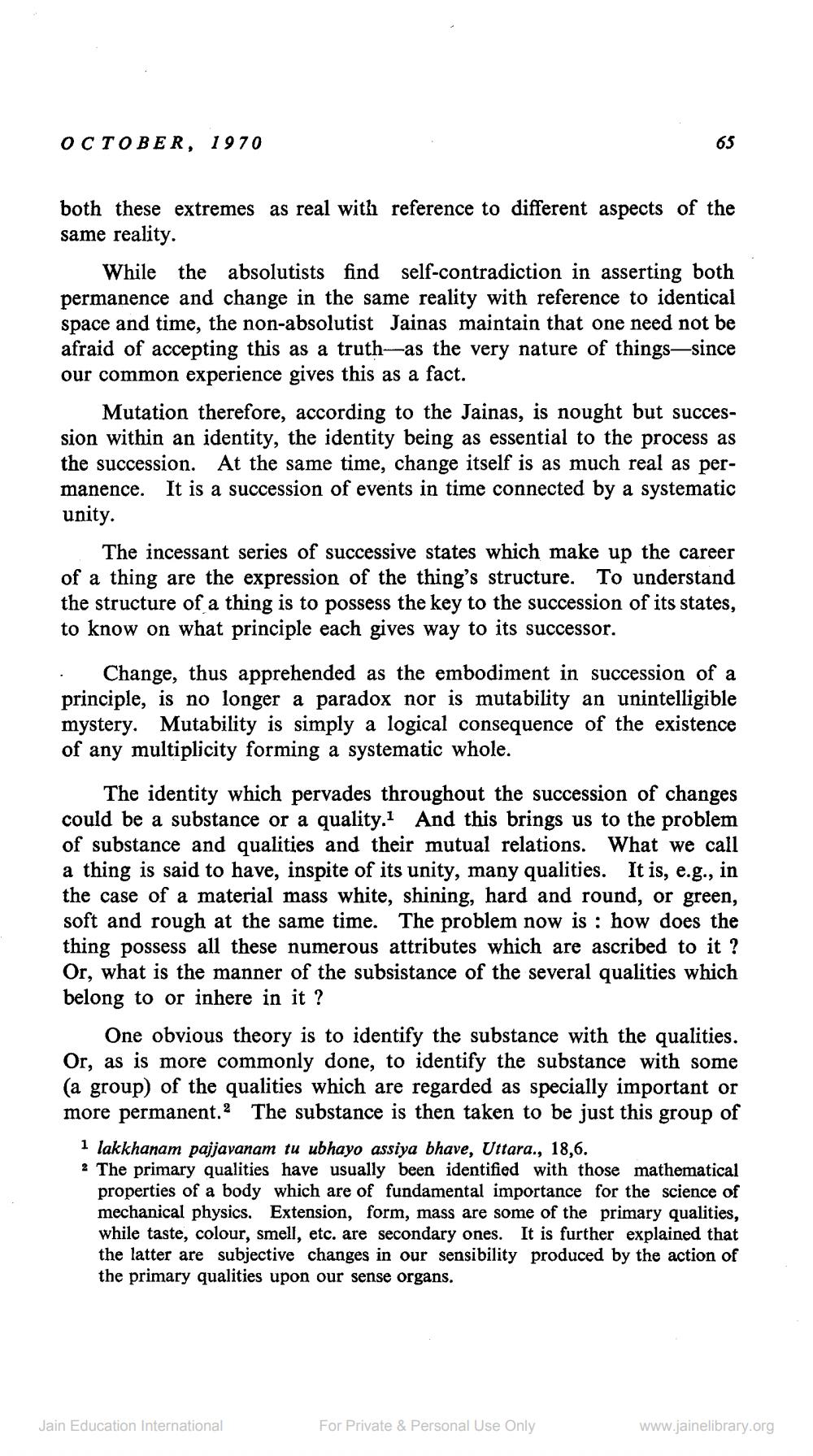________________
OCTOBER, 1970
both these extremes as real with reference to different aspects of the same reality.
65
While the absolutists find self-contradiction in asserting both permanence and change in the same reality with reference to identical space and time, the non-absolutist Jainas maintain that one need not be afraid of accepting this as a truth-as the very nature of things-since our common experience gives this as a fact.
Mutation therefore, according to the Jainas, is nought but succession within an identity, the identity being as essential to the process as the succession. At the same time, change itself is as much real as permanence. It is a succession of events in time connected by a systematic unity.
The incessant series of successive states which make up the career of a thing are the expression of the thing's structure. To understand the structure of a thing is to possess the key to the succession of its states, to know on what principle each gives way to its successor.
Change, thus apprehended as the embodiment in succession of a principle, is no longer a paradox nor is mutability an unintelligible mystery. Mutability is simply a logical consequence of the existence of any multiplicity forming a systematic whole.
The identity which pervades throughout the succession of changes could be a substance or a quality.1 And this brings us to the problem of substance and qualities and their mutual relations. What we call a thing is said to have, inspite of its unity, many qualities. It is, e.g., in the case of a material mass white, shining, hard and round, or green, soft and rough at the same time. The problem now is how does the thing possess all these numerous attributes which are ascribed to it? Or, what is the manner of the subsistance of the several qualities which belong to or inhere in it?
One obvious theory is to identify the substance with the qualities. Or, as is more commonly done, to identify the substance with some (a group) of the qualities which are regarded as specially important or more permanent.2 The substance is then taken to be just this group of
1 lakkhanam pajjavanam tu ubhayo assiya bhave, Uttara., 18,6.
2 The primary qualities have usually been identified with those mathematical properties of a body which are of fundamental importance for the science of mechanical physics. Extension, form, mass are some of the primary qualities, while taste, colour, smell, etc. are secondary ones. It is further explained that the latter are subjective changes in our sensibility produced by the action of the primary qualities upon our sense organs.
Jain Education International
For Private & Personal Use Only
www.jainelibrary.org




